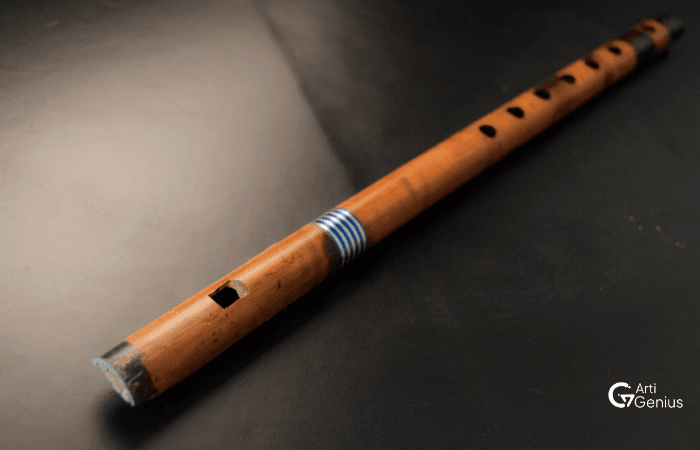Playing the flute for beginners can be an exciting and rewarding experience. Whether you're a complete beginner or looking to improve your skills, this guide will help you learn how to play the flute quickly and effectively.
We'll cover everything from holding the flute to producing sound and playing your first notes. Let's get started!
Getting Started with the Flute
Choosing Your Flute
Before you start learning how to play flute, you need to choose the right instrument. For beginners, it's best to start with a student model flute which is designed to be easier to play. Make sure your flute is in good condition and well-maintained.
Assembling the Flute
Join the Foot Joint and Body Joint: Hold the body of the flute firmly and gently twist the foot joint onto it. Be careful not to grip the keys. Attach the Head Joint: Align the head joint with the body joint and twist it gently into place. Ensure the embouchure hole aligns with the keys.
How to Hold a Flute
Properly holding the flute is crucial for producing a good sound and playing comfortably.
Hand Position
Left Hand: Place your left hand on the top part of the flute with your thumb under the instrument and your fingers covering the keys. Your index finger should be on the first key, your middle finger on the second, and your ring finger on the third.
Right Hand: Your right hand supports the flute from below. Place your right thumb under the flute and your fingers on the keys. Your pinky finger should rest on the foot joint's key.
Posture
Maintain a relaxed posture with your back straight and shoulders relaxed. Hold the flute parallel to the floor and slightly to the right of your body. This will help you produce a clear sound and avoid strain. Producing Sound on the Flute
Embouchure
The embouchure is the shape and position of your lips when playing the flute. Here's how to form it: Shape Your Lips: Form a small "O" shape with your lips. Imagine saying "too" softly.
Blow Across the Embouchure Hole: Hold the flute so the embouchure hole is just below your bottom lip. Remember to blow a steady stream of air across the hole. Adjust your lips and the angle of the flute until you produce a clear sound.
Breathing
Good breath control is essential when learning how to play flute. Take deep breaths from your diaphragm and blow a steady stream of air. Practice long tones by holding a note for as long as you can while maintaining a clear sound.
Flute Lessons for Beginners
Learning the Notes
Start by learning the basic notes on the flute. Here are the fingerings for the first few notes:
B: Cover the first hole with your left index finger.
A: Cover the first and second holes with your left index and middle fingers.
G: Cover the first, second, and third holes with your left index, middle, and ring fingers.
C: Cover the first hole with your left index finger and the first hole on the foot joint with your right pinky finger.
Practicing Scales
Once you know a few notes, practice playing scales. C Major scale will be a goog start for you, including the notes C, D, E, F, G, A, B, and C. Play each note slowly and clearly, focusing on producing a good tone.
Reading Music
Learning to read music is an important part of playing the flute. Begin by familiarizing yourself with the musical staff, notes, and rhythms. Practice simple melodies and gradually move on to more complex pieces.
Tips for Fast Learning
Regular Practice
Consistency is key when learning how to play flute. Aim to practice for at least 20-30 minutes daily. Regular practice is the key to building muscle memory and enhancing your technique..
Take Flute Lessons
Consider taking flute lessons for beginners from a qualified instructor. A teacher can provide personalized guidance, correct your technique, and help you progress faster.
Use Online Resources
There are many online resources available to help you learn to play flute. Websites, videos, and tutorials can provide additional instruction and inspiration.
Join a Community
Joining a flute community or group can be motivating and fun. You can share tips, learn from others, and even participate in group performances.
Common Questions
Is Flute Easy to Learn? Many beginners wonder, "Is flute easy to learn?" Playing the flute can be tough at first, but with regular practice and dedication, it gets easier. The trick is to begin with the basics and slowly improve your skills.
How Long Does It Take to Learn to Play Flute? The time it takes to learn to play flute varies depending on the individual. Some may learn the basics in a few months, while others may take longer. Regular practice and taking flute lessons for beginners can speed up the process.
What Are the Benefits of Playing the Flute? Playing the flute offers numerous benefits, including improved breath control, finger dexterity, and overall musicality. It's also a great way to express yourself creatively and can be a relaxing and enjoyable hobby.
Advanced Techniques Vibrato Once you're comfortable with the basics, you can start learning more advanced techniques like vibrato. Vibrato is a slight fluctuation in pitch that adds expression to your playing. To practice vibrato, alternate between a slightly higher and lower pitch while holding a note. Articulation Articulation refers to how you start and stop notes. Practice different articulation techniques such as tonguing (starting a note with a "ta" sound) and slurring (playing notes smoothly without tonguing).
Conclusion
Learning how to play the flute can be a rewarding journey. By following these steps and dedicating time to regular practice, you'll be able to learn to play flute quickly and effectively. Remember, the key to success is patience and persistence. So, pick up your flute, start practising, and enjoy the beautiful music you create! By incorporating the key steps and techniques outlined in this guide, you'll be well on your way to mastering the flute. Whether you're a complete beginner or looking to improve your skills, these tips will help you achieve your musical goals. Happy playing!



